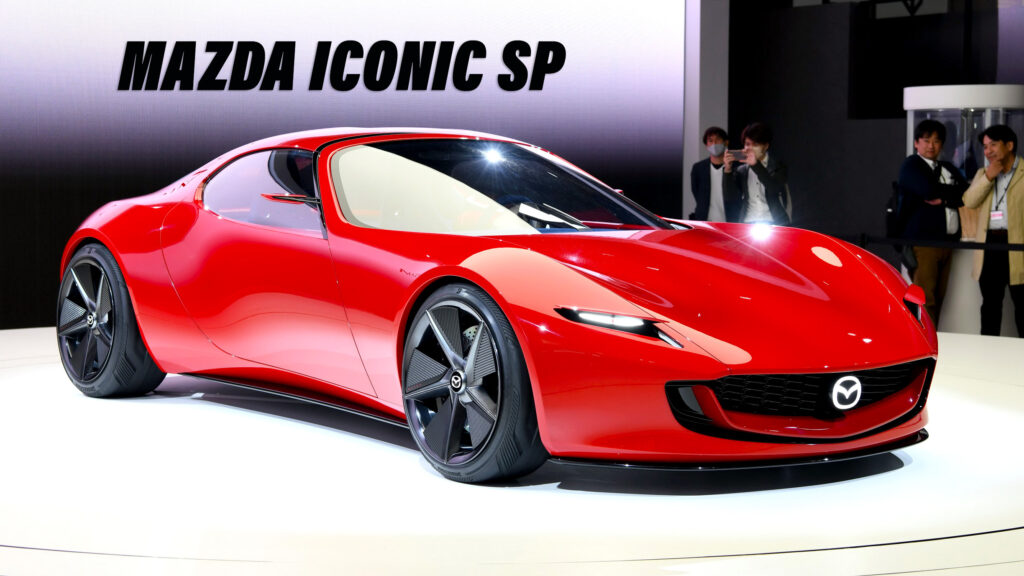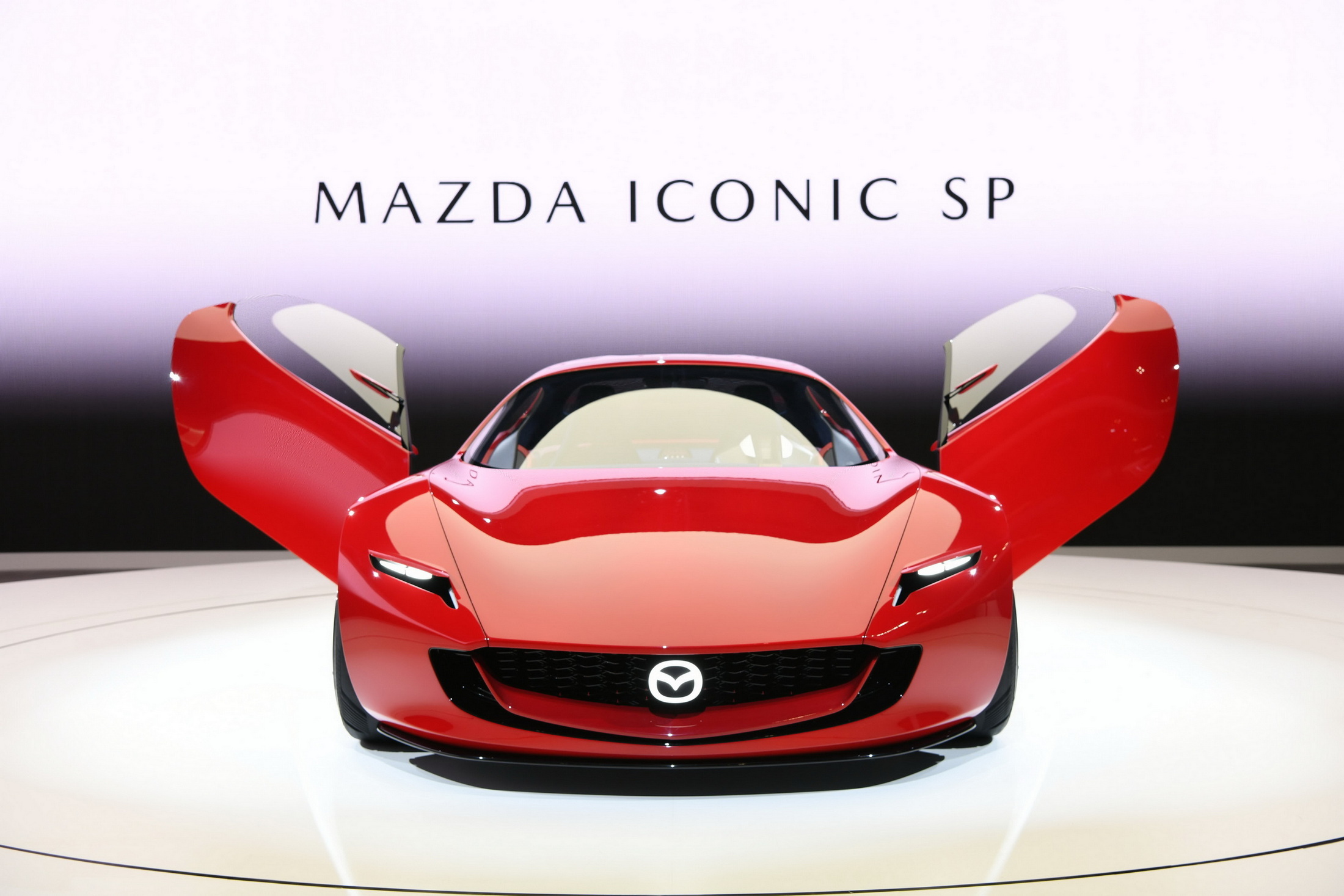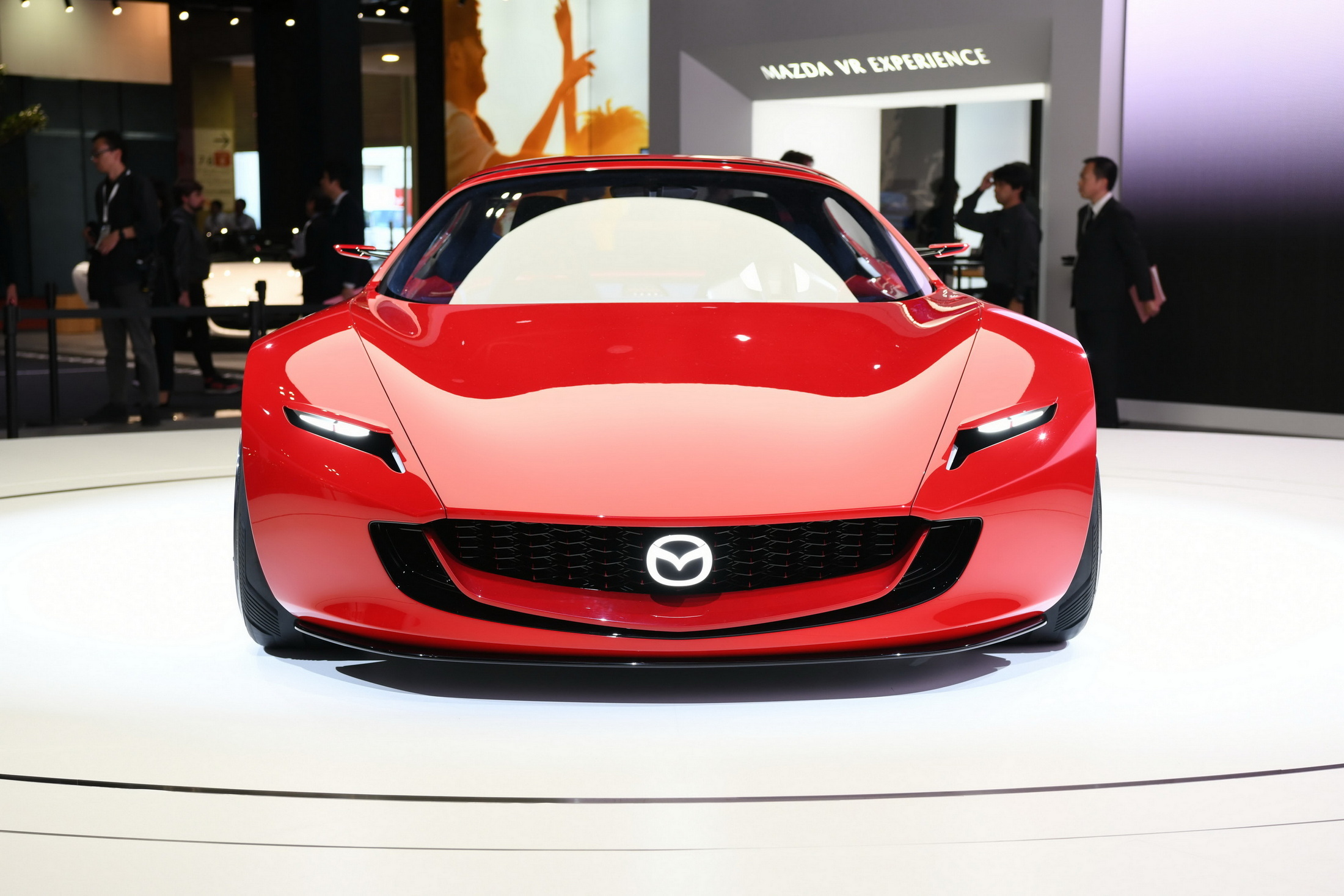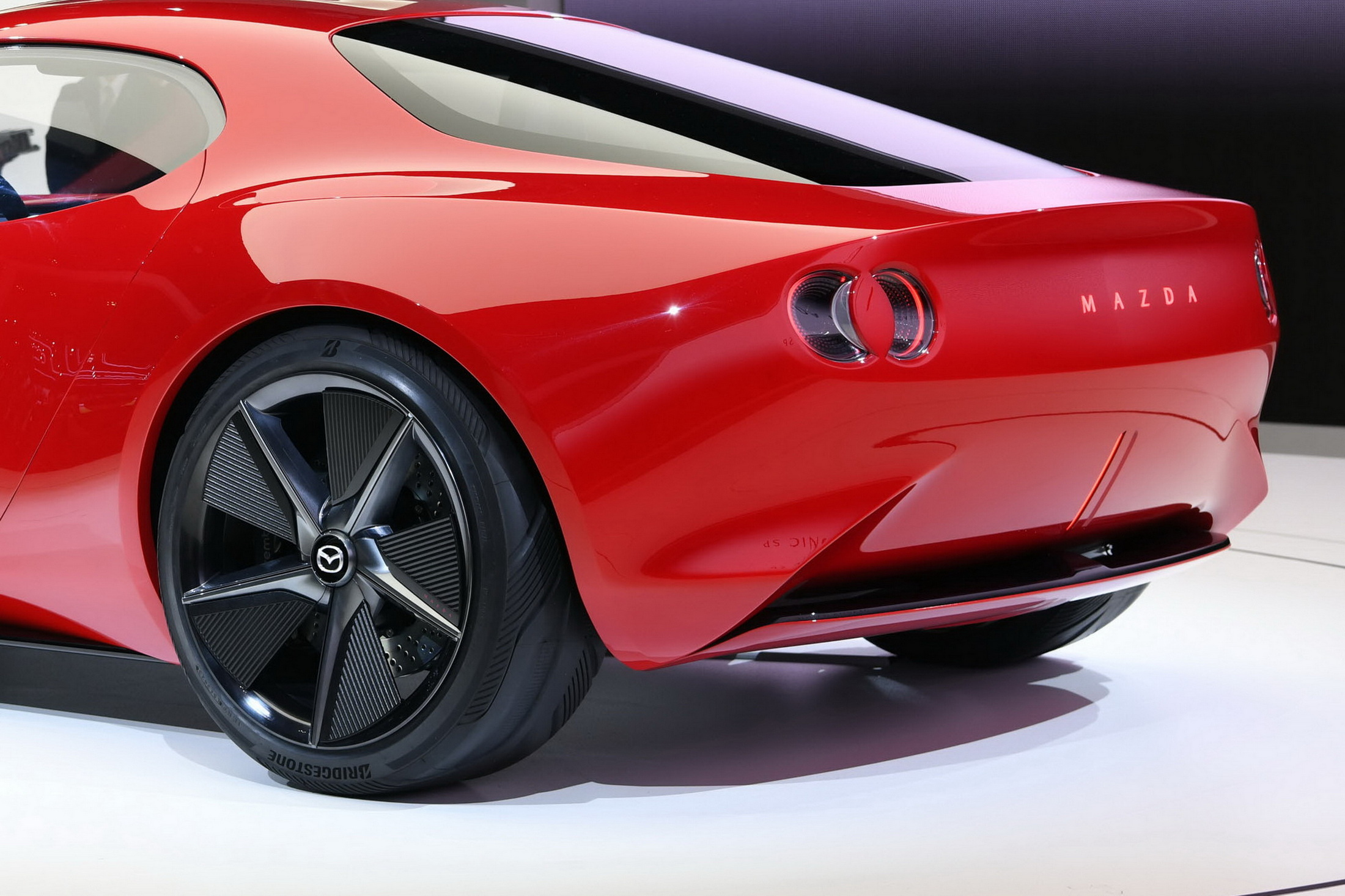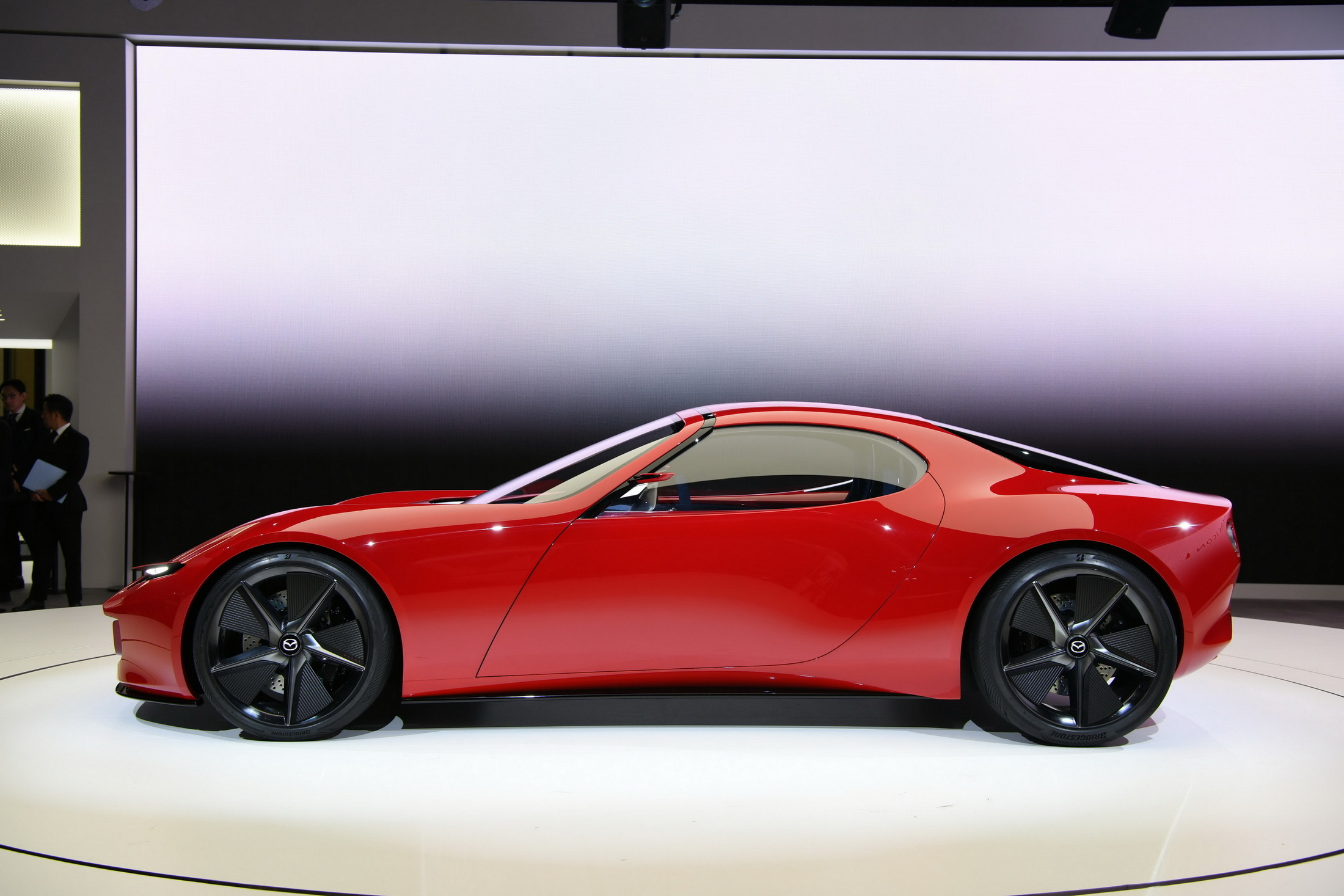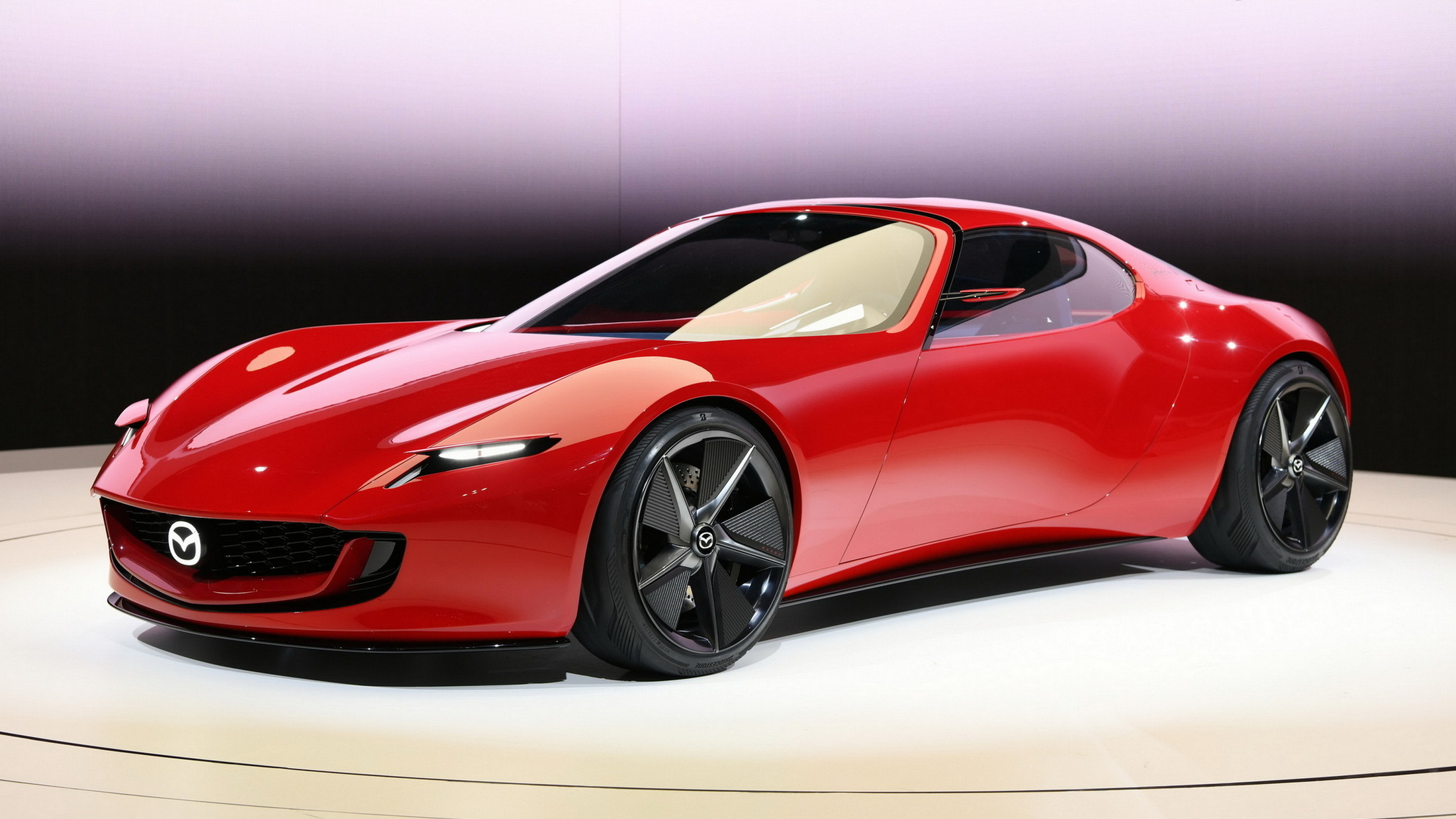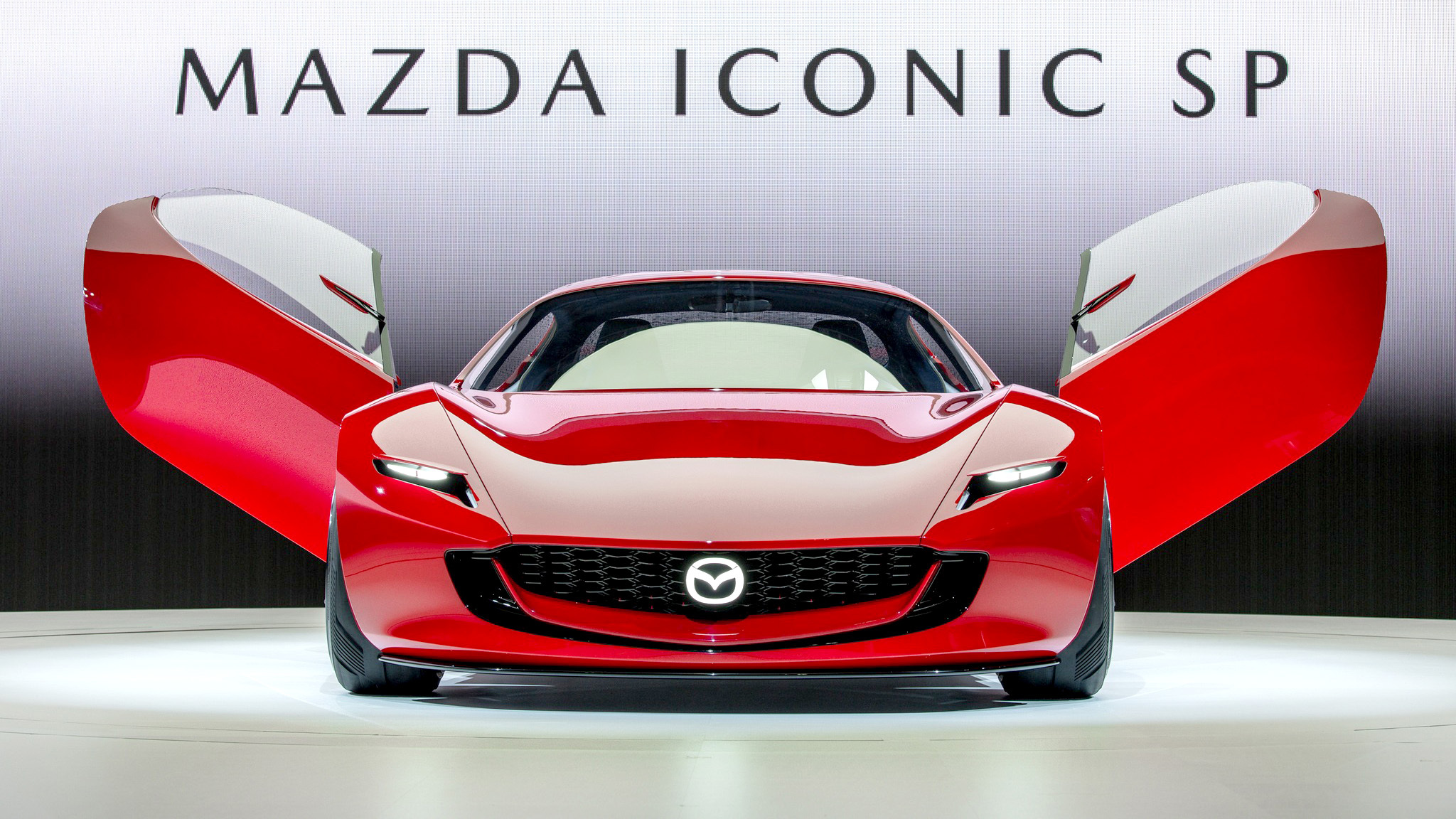Earlier this week, Mazda unveiled a gorgeous, classical coupe concept at the Japan Mobility Show. Although it was supposed to be a look into the future MX-5 design, it was actually 10 inches longer than the current roadster. However, the automaker says that you shouldn’t read too much into the size of the concept car.
Chief Designer Masashi Nakayama said that the Iconic SP was deliberately oversized for its auto show debut. He added that all of the technology and design could easily be shrunk down to the size of an MX-5, per Automotive News. While that will no doubt please fans of the legendary sports car, it’s unlikely that the weight can be shrunk down, too.
Although the little rotary engine removes some of the burden from the battery pack, making it smaller and lighter, the concept still weighs in at 1,450 kg (3,196 lbs). That’s significantly more than the MX-5, which weighs less than 1,089 kg (2,400 lbs).
Read: Mazda Iconic SP Is A 365 HP Twin-Rotor Hybrid MX-5 From The Near Future
While the weight of electrified vehicles is a concern in general, it is especially so for sports cars, and still more of a concern for the MX-5, whose low weight is one of its central appeals. That allows it to be exciting while being powered by an engine that produces just 181 hp (135 kW/183 PS).
If the Iconic SP shrinks, its weight no doubt will, too. But the lion’s share of the extra heft likely comes from the powertrain that needs an engine (albeit a small one), electric motors, and batteries, too. The car will at least have more power to help carry that extra weight around, though.
With a proposed output of 365 hp (272 kW/370 PS), that’s a huge jump over the MX-5. And Mazda hasn’t forgotten what it’s about with the Iconic SP. The automaker plans to put the engine in the middle of the car so that it will have perfect 50:50 weight distribution, which should help with handling. It will also burn a little cleaner than the MX-5.
“The rotary engine can also burn hydrogen, liquefied natural gas and biofuels. It has great potential for future environmental friendliness,” said Masahiro Moro, Mazda CEO. “Combined with motors and other electrification devices, it is an extremely good match.”
That’s all well and good, but it may leave you wondering why Mazda would bother calling it an MX-5 when it would inevitably struggle to live up to its predecessors’ image. It’s doubly puzzling when power comes from a rotary engine, with which the brand has a history of making larger and heavier sports cars.
That’s a question that Mazda is leaving an open-ended answer to. While the brand has hinted that the Iconic SP is a sign of what it’s planning with the MX-5, Nakayama said that it deliberately chose a vague name for the concept, in order to leave some mystery about what vehicle it represents specifically. Perhaps things aren’t as simple as they seem.




